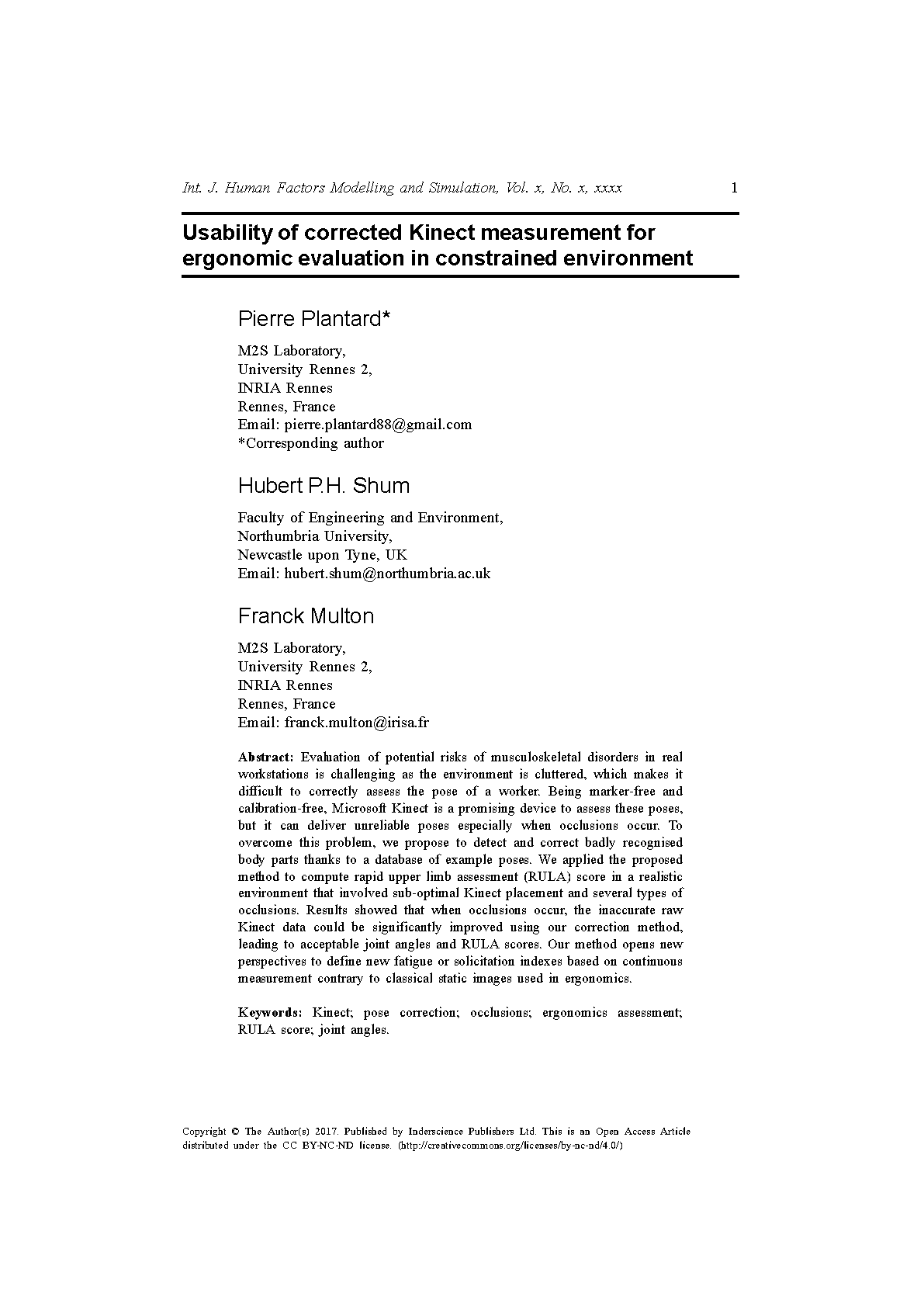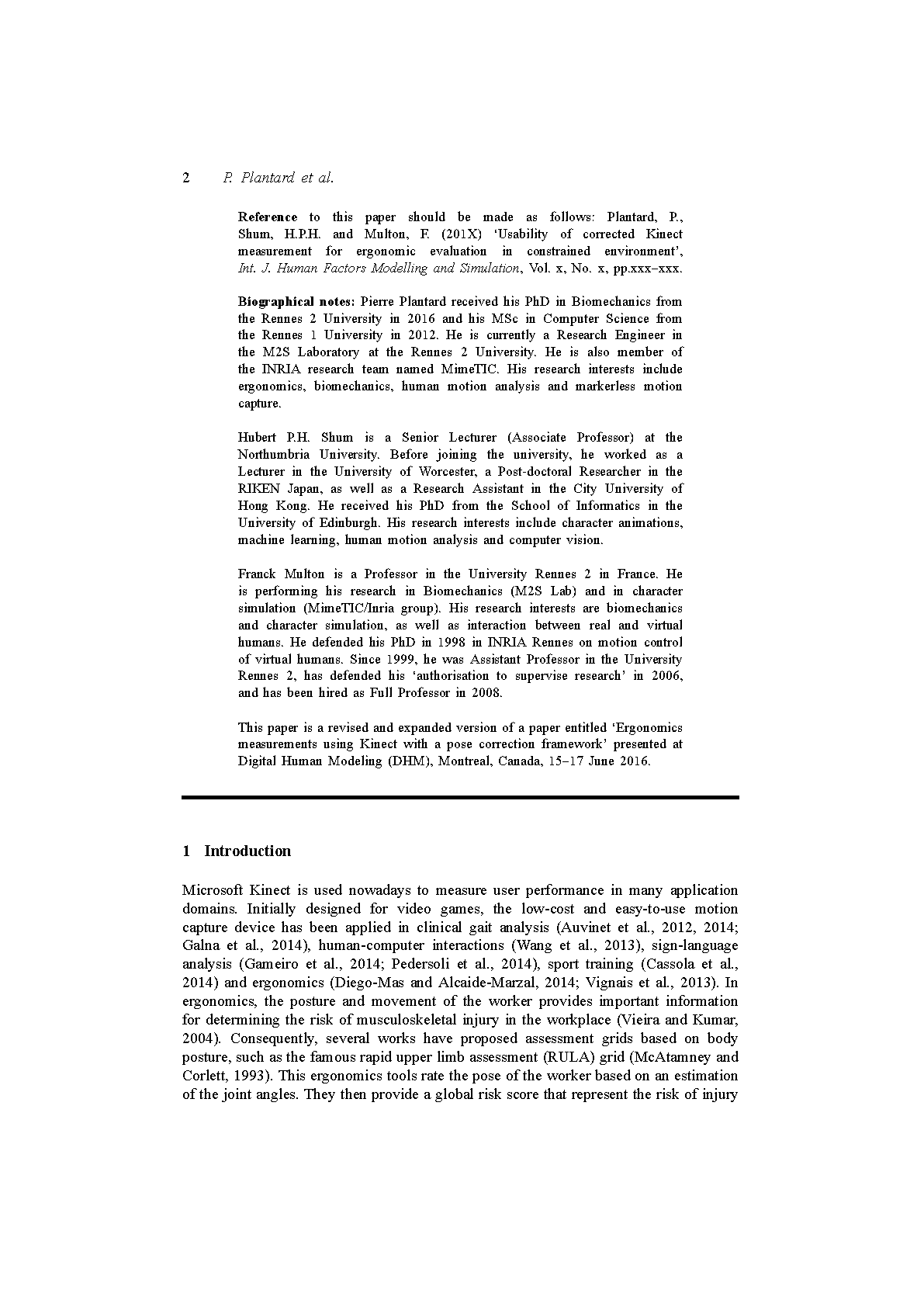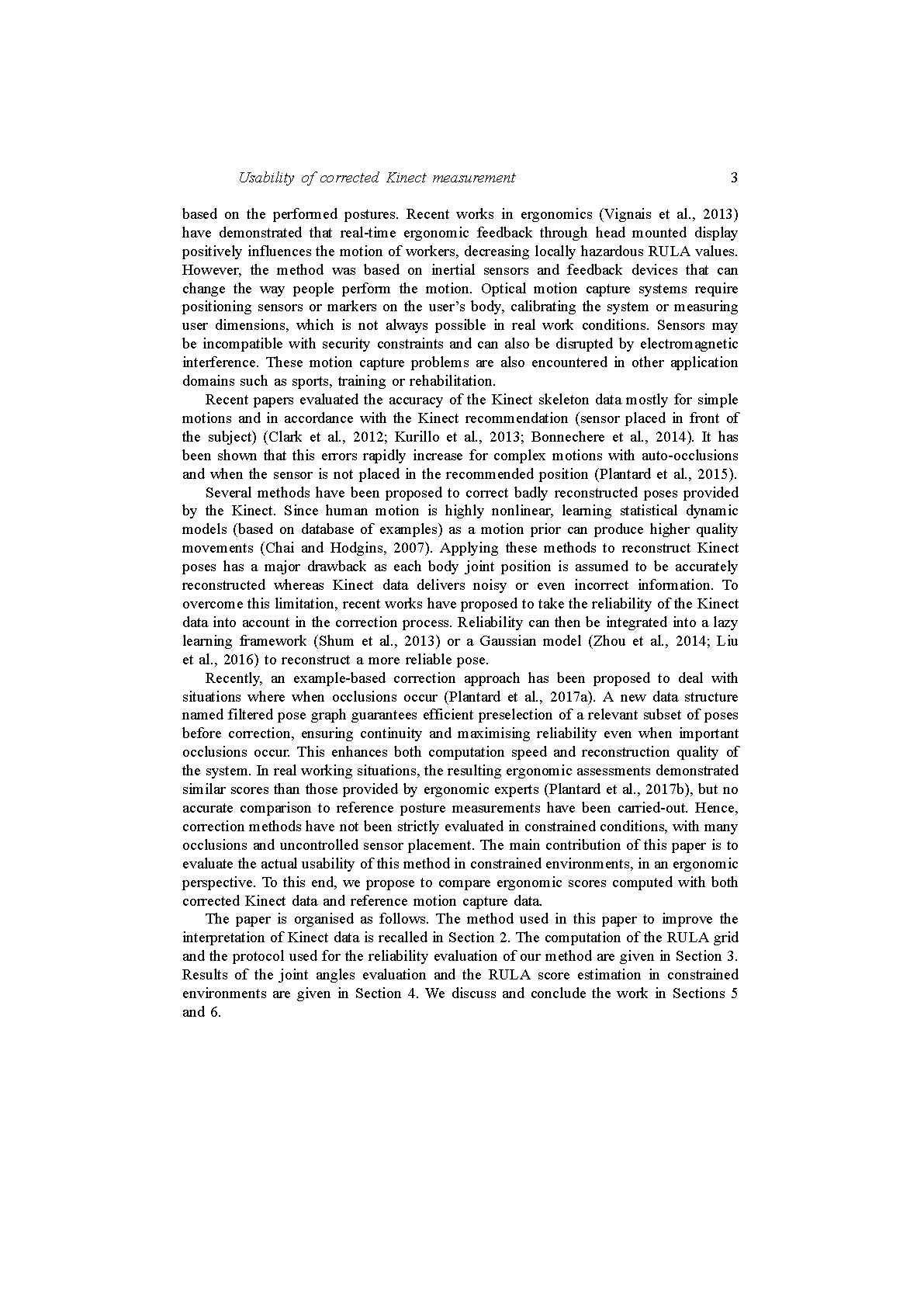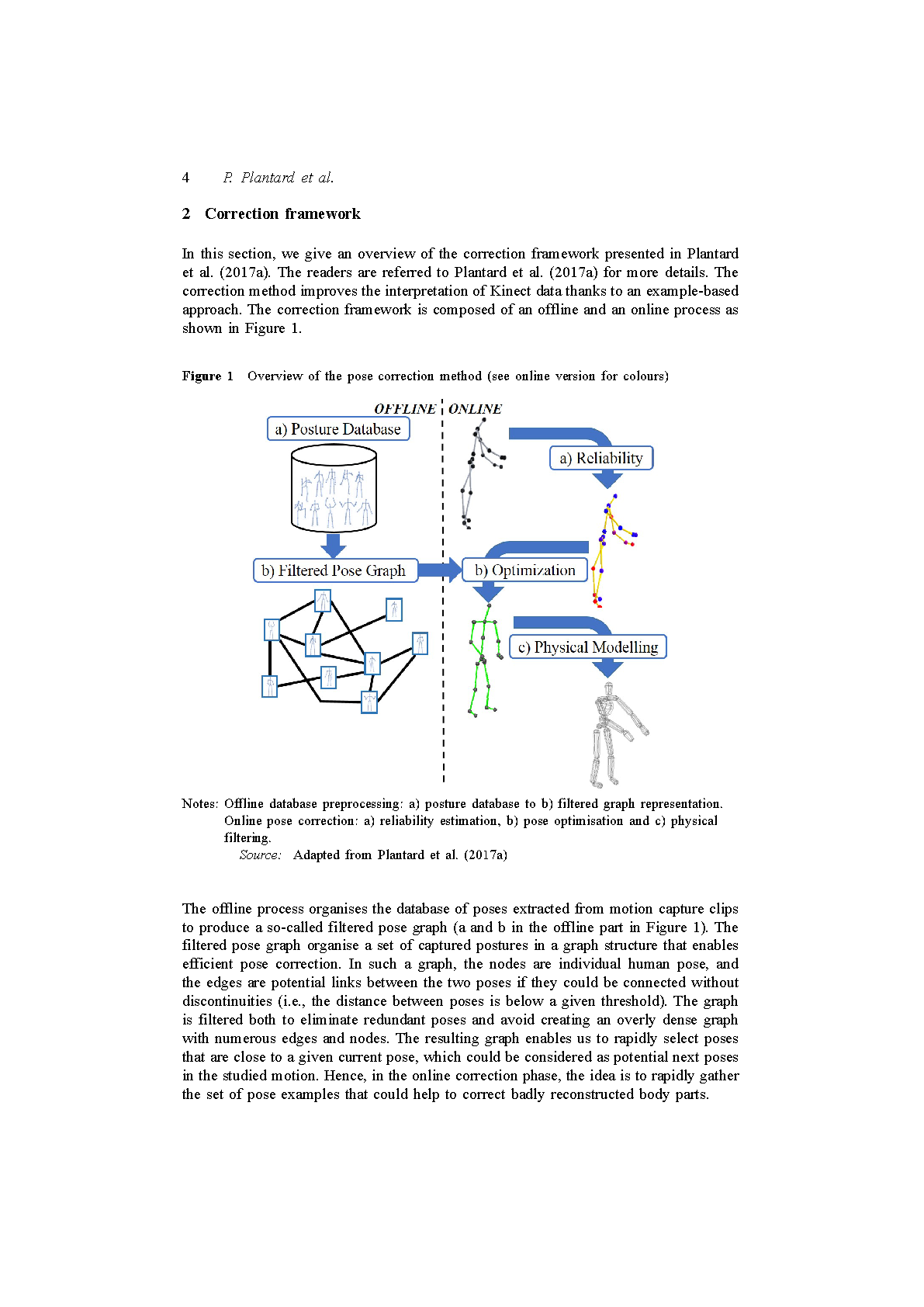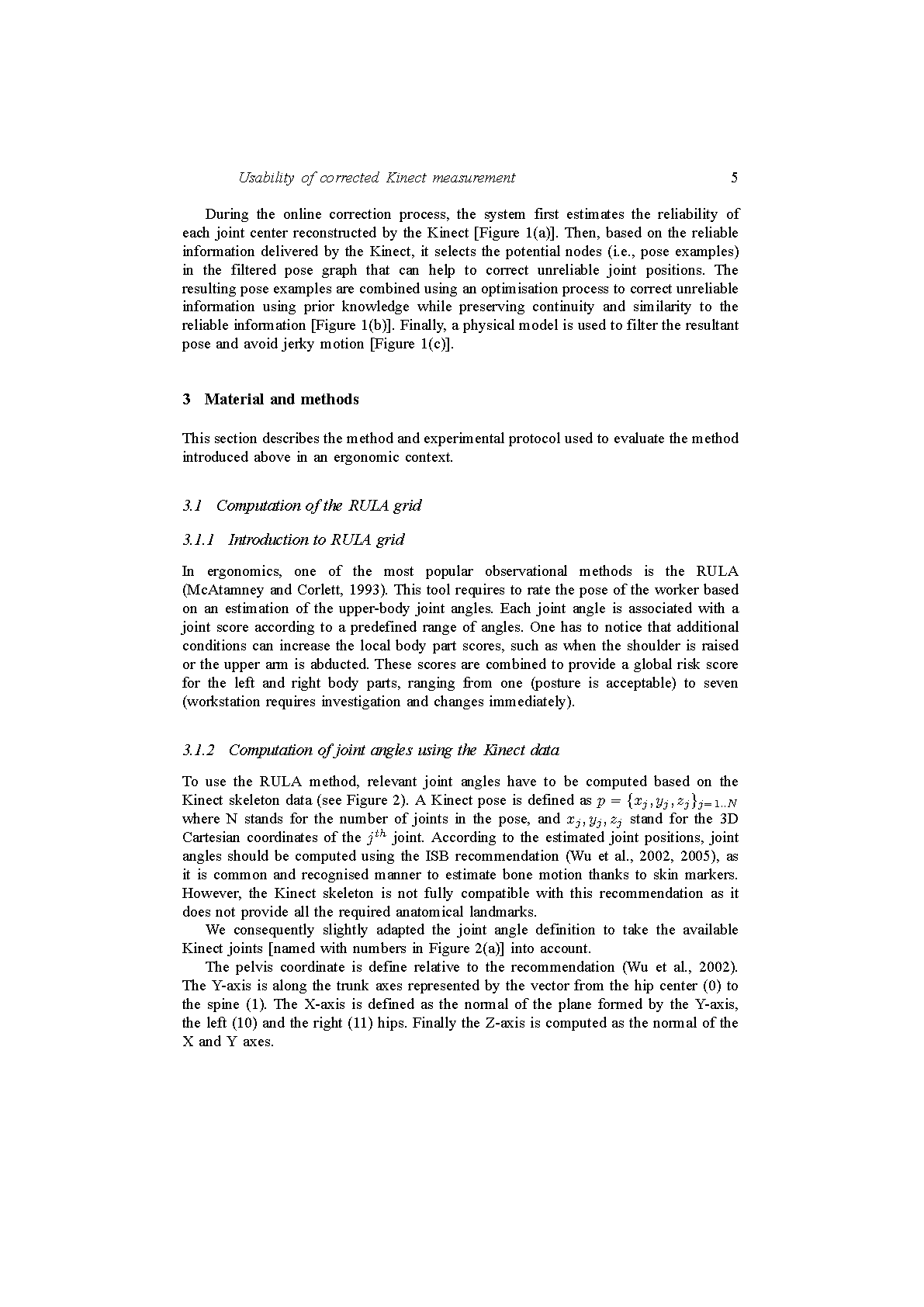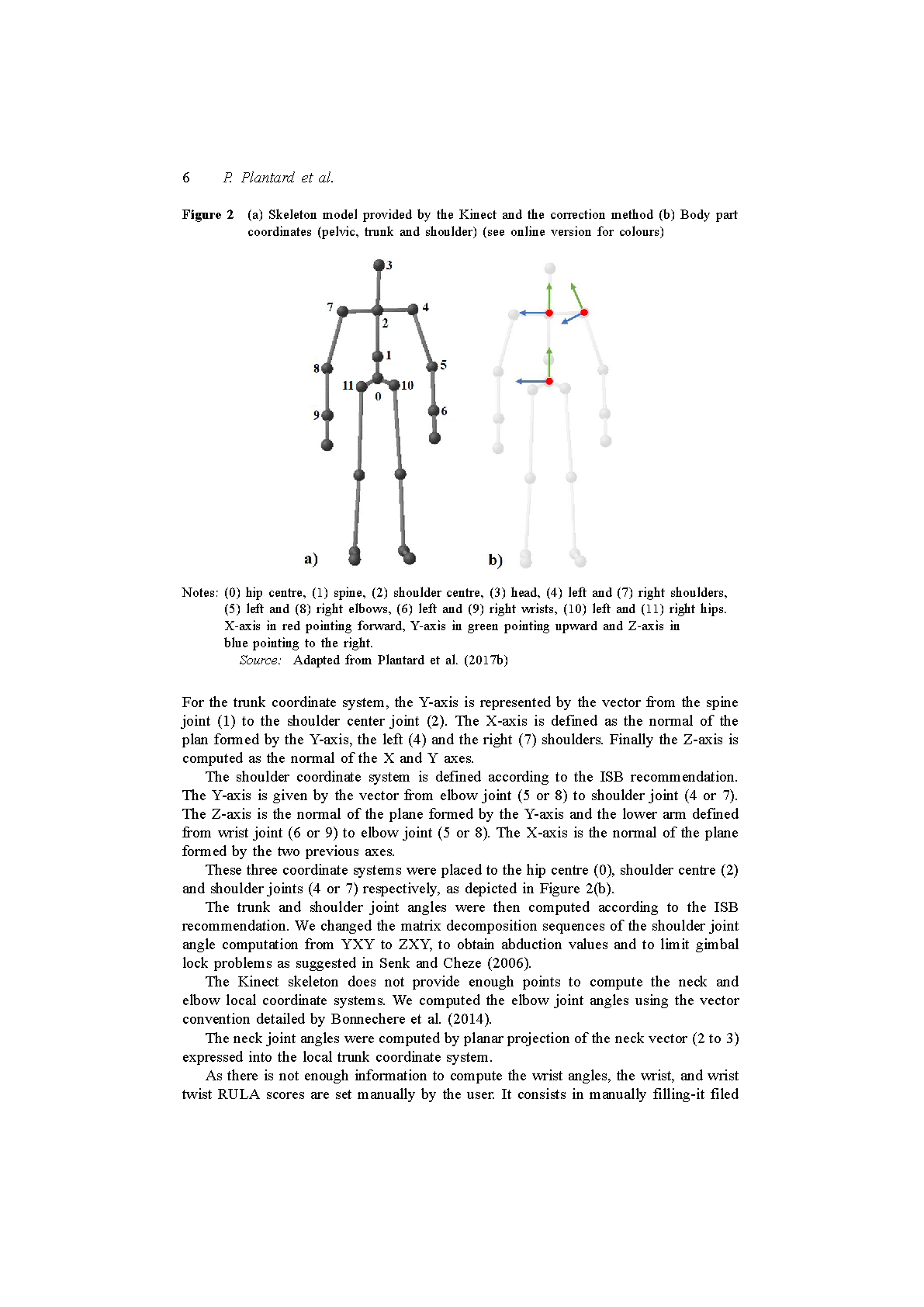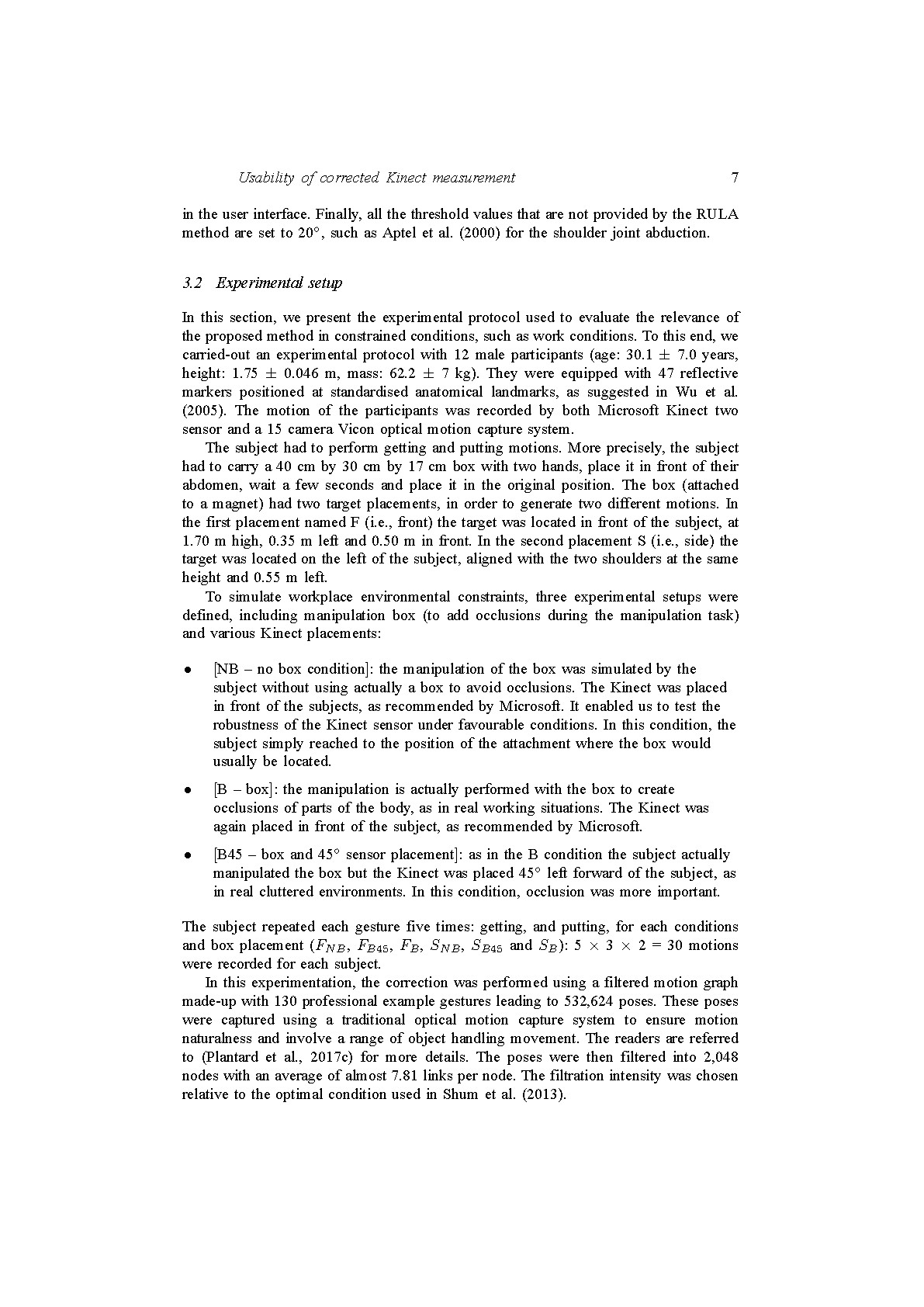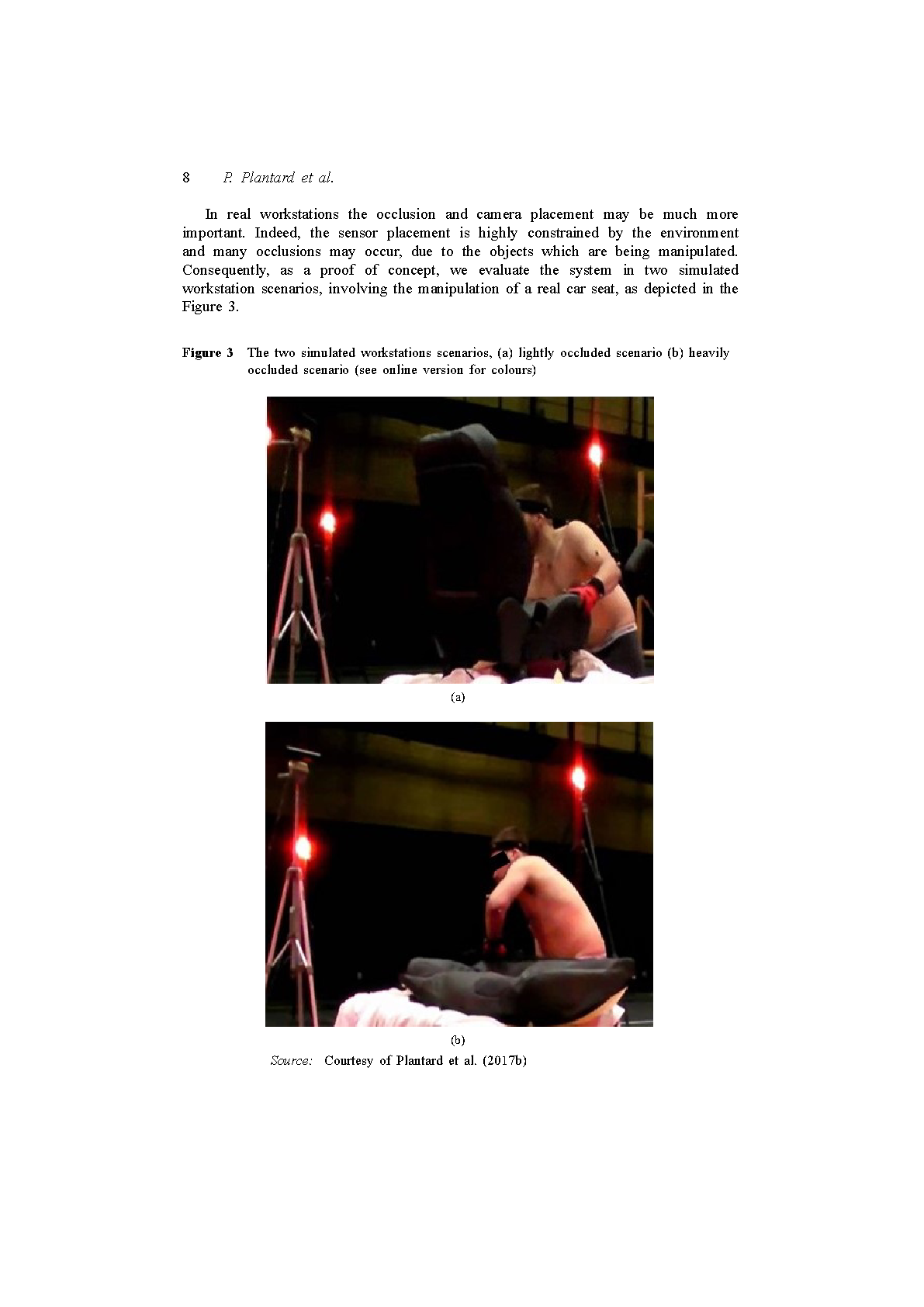Usability of Corrected Kinect Measurement for Ergonomic Evaluation in Constrained Environment

Abstract
Evaluation of potential risks of musculoskeletal disorders in real workstations is challenging as the environment is cluttered, which makes it difficult to correctly assess the pose of a worker. Being marker-free and calibration-free, Microsoft Kinect is a promising device to assess these poses, but it can deliver unreliable poses especially when occlusions occur. To overcome this problem, we propose to detect and correct badly recognized body parts thanks to a database of example poses. We applied the proposed method to compute Rapid Upper Limb Assessment (RULA) score in a realistic environment that involved sub-optimal Kinect placement and several types of occlusions. Results showed that when occlusions occur, the inaccurate raw Kinect data could be significantly improved using our correction method, leading to acceptable joint angles and RULA scores. Our method opens new perspectives to define new fatigue or solicitation indexes based on continuous measurement contrary to classical static images used in ergonomics.
Publication
Usability of Corrected Kinect Measurement for Ergonomic Evaluation in Constrained Environment by Pierre Plantard, Hubert P. H. Shum, Anne-Sophie Le Pierres and Franck Multon in 2017
International Journal Human Factors Modelling and Simulation (IJHFMS)
Links and Downloads
